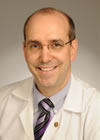In The News
Dr. Glenn Davison, St. Luke's Hospital

SCAD poses threat to women's health
According to the latest statistics, approximately 42 million American women live with some form of cardiovascular disease, and many are still unaware of the risks they face.
One of the least recognized cardiovascular-related conditions is called spontaneous coronary artery dissection (SCAD). Most people probably have never heard of the condition, but it poses a real threat. SCAD occurs when two of the three layers in the coronary artery separate, causing blood to enter the space between the layers. The blood tracks down the layers, "dissecting" its way along the artery. This can result in a partial or complete blockage causing chest pain, a heart attack or sudden cardiac death.
Women are more susceptible to SCAD than men, with approximately 70 to 75 percent of the cases occurring in women aged 50 or younger. Those who develop SCAD are typically between the ages of 30 and 50.
Pregnant women are at increased risk for SCAD. In fact, about 30 percent of SCAD cases in women occur during the final trimester or following childbirth. There is no conclusive evidence as to why pregnant women are at higher risk for SCAD, although some believe changes in blood vessels, sex hormones and blood volume are the main reasons.
An inflammatory reaction is almost always the underlying common denominator. A condition that affects mostly women called fibromuscular dysplasia (where arteries become narrowed due to accumulations of cells on the artery wall) also seems to be a risk factor for SCAD.
Recent studies suggest that SCAD can affect anyone - even those who consider themselves fit and healthy or do not have risk factors for coronary artery disease. There is ongoing research that suggests the condition is more common than previously thought. Some researchers now believe that many previous heart attacks attributed to cholesterol blockages may have been due to SCAD instead.
To properly diagnose SCAD, a physician may use advanced imaging tests, like a coronary angiogram or CT angiography, to get a better view of your coronary arteries. Treatments can include monitoring, medications, angioplasty or bypass surgery.
Dr. Glenn Davison is a cardiologist at St. Luke's Hospital. For more information, call 314-205-6060.
This article was published in the St. Louis Post-Dispatch on August 9, 2012.
